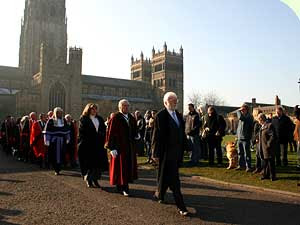
Political legal environment consists of :
- Political environment :It is concerned with natural and direction of political forces related to management of public affairs.The elements of political environment that influence organization are :
A)Political system :It consists of ideological forces.Political,election procedures,and power center .A stable,efficient and honest political system is essential for the growth of organization.
B)Political industry :They consists of legislature,executive and judiciary.
B)Political industry :They consists of legislature,executive and judiciary.
- The legislature enacts laws that guide organizational activities.
- The executive implements the decisions of the legislature.It lays down policies,regulations and procedures that influence the of organization.
- The judiciary service as a watching.Its rulings influence organizational practices.It settles disputes and carries out judicial review.
C)Political philosophy :The political ideology can be democratic,totalitarian or a mix of both.Democracy vests power in the hands of people.Totalitarian vests power in the hands of the state.
Political philosophies influence organization's activities.Democracy provides greater role to private sector.Totalitarianism provides greater role to state.Mixed philosophies provide roles to both private sectors and state.
2. Legal environment :Legal environment refers to all the legal surrounding that affects organization's activities.It consists of an array of acts,rules,regulations,precedent,institutions and processes.It defines what organizations can be cannot do.
Legal environment is concerned with.
Political philosophies influence organization's activities.Democracy provides greater role to private sector.Totalitarianism provides greater role to state.Mixed philosophies provide roles to both private sectors and state.
2. Legal environment :Legal environment refers to all the legal surrounding that affects organization's activities.It consists of an array of acts,rules,regulations,precedent,institutions and processes.It defines what organizations can be cannot do.
Legal environment is concerned with.
- Protecting the rights and interests of organizations,consumers,employees,and the society.Intellectual property rights are also produced.
- Providing grounds on which organizations activities can be carried out.It encourage of restrains activities by providing facilities to low abide rs.It gives punishments to low breakers.
- Regulations activities through legal provisions relating to licencing,employment,monopoly,foreign investment,foreign exchange,environment protection,consumer protection,product safety,industrial location,imports,exports,pricing,and taxation etc.
- Organization must ensure that there activities conform to the low of the land.They must comply with legal provisions in force.Changes in lows affects strategy.
The elements of legal environments that influence organization are:
A) Laws :They consist of an array of lows enacted by the parliament.They also protect the rights and interests of consumers labour,business,and society .They affects business organizations.
B) Courts of low :Courts are institutions established buy law solve legal.The supreme court is at the national level and is the highest levels of district courts are at district level.
C) Law administrators :Various law enforcement agencies ensure implementation of laws and the judgment of the courts of law.Governments agencies,lawyers,police and jail play important role in law administration.
A) Laws :They consist of an array of lows enacted by the parliament.They also protect the rights and interests of consumers labour,business,and society .They affects business organizations.
B) Courts of low :Courts are institutions established buy law solve legal.The supreme court is at the national level and is the highest levels of district courts are at district level.
C) Law administrators :Various law enforcement agencies ensure implementation of laws and the judgment of the courts of law.Governments agencies,lawyers,police and jail play important role in law administration.














.jpg)










